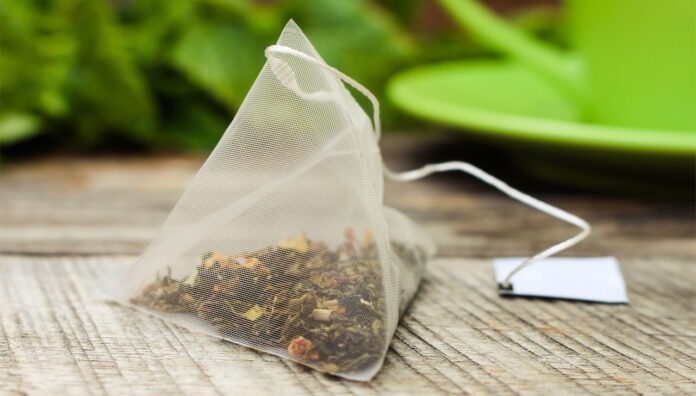Despite its flaws, theophylline remains available in Australia.
Theophylline had an auspicious birth. It was extracted from tea leaves in 1888 by German science star and University of Strasbourg biochemist Albrecht Kossel. At the time, Kossel was isolating and describing nucleic acids, work that set the stage for James Watson, Francis Crick and their Nobel Prize-winning double-helix model of DNA. It also helped Kossel win his own Nobel Prize in 1910.1,2
While not a Nobel Prize winner itself, by the turn of the century theophylline had been chemically synthesised and affordably commercialised. Its future looked promising as a diuretic. Then in 1922 Samuel Hirsch discovered its effectiveness as a bronchodilator and Kossel’s discovery sold well. To this day theophylline is prescribed for assorted respiratory conditions such as asthma and chronic obstructive pulmonary disease (COPD), albeit rarely.3-5,7
The reason for theophylline’s reduced popularity is this: adverse effects.6,7
The downside
Although theophylline is affordable, available and does the job, it has a narrow therapeutic window and is associated with frequent adverse effects. Among them are headache, palpitations, insomnia, nausea, reflux and vomiting. Severe adverse effects such as seizures and increased mortality among COPD patients have limited its use.4,8
Further, theophylline interacts with numerous other medicines and substances. These range from riociguat for pulmonary hypertension, and carbamazepine for epilepsy, to caffeine, alcohol and, when smoked, tobacco and cannabis. Resulting interactions can either limit the effectiveness of theophylline or increase its toxicity.4,12
What is theophylline?
Theophylline is a compound derived from a methylxanthine in tea. Caffeine (in coffee) and theobromine (in chocolate) are also methylxanthines. Methylxanthines are a unique class of medicine that are obtained from the purine base xanthine. In turn, xanthine is produced naturally by both plants and animals.4,8,10,11,13
How it works
Despite its century-long presence on pharmacists’ shelves, theophylline’s mechanism of action is uncertain. Most experts agree that it does two key jobs. It relaxes the smooth muscles around the bronchial airways and pulmonary blood vessels, making it easier to breathe.
Theophylline also reduces responsiveness of the airways to irritants like histamine, methacholine, adenosine and allergens.4,10,12 In a nutshell, theophylline acts as a bronchodilator and as an antiinflammatory.8,9
Theophylline today
A visit to the local pharmacy is evidence that theophylline remains available in Australia. With a prescription for Nuelin-SR 250 mg in hand, it’s possible to purchase 100 tablets for under $10.15,16
But in wealthy countries like Australia, theophylline is not routinely recommended for the treatment of asthma and COPD.4,7,17 That’s thanks to inhaled corticosteroids and improved bronchodilators, the latter based on β2-agonists first developed in 1968 by a team at Glaxo.7,14
Currently, practice guidelines do not promote theophylline, with either no mention or noting of inferior effectiveness and adverse effects.18,19
However, two linked US studies investigated its usefulness in treating COVID-19-related anosmia. The results were mixed but researchers smell progress.20-22
Theophylline: online references
-
- Jones ME. Albrecht Kossel, a biological sketch. Yale University School of Medicine.
- Britannica. Albrecht Kossel, German biochemist. 2022.
- Wettengel R. Theophylline – past present and future. Arzneimittelforschung. 1998 May;48(5A):535–9.
- Jilani TN, Preuss CV, Sharma S. Theophylline. StatPearls [Internet]. StatPearls Publishing 2022.
- Haen E. 80 Years of theophyllin. A successful antiasthmatic drugs has still not yet come out of age. Atemwegs und Lungenkrankheiten 2002;28(2):51–62.
- Inserro A. Low-dose theophylline not effective at reducing COPD exacerbations, study finds. AJMC 2018.
- Barnes PJ. Theophylline. AJRCCM 2013;188(8).
- Burks AW. Airway mucus and mucociliary system. In Middleton’s Allergy: Principles and Practice, Ninth Edition. Elsevier Inc. 2020.
- Medline Plus. Theophylline. National Institutes of Health. National Library of Medicine. 2019.
- DrugBank. Theophylline. 2022.
- Drugs.com. Methylxanthines, what are methylxanthines? 2022.
- WebMD. Theophylline ANHYDROUS – uses, side effects, and more.
- Medical Dictionary. Methylxanthine. 2022.
- Billington CK, Penn RB, Hall IP. β2 Agonists. Handb Exp Pharmacol 2017;237:23–40.
- Pharmaceutical Benefits Scheme. Australian Government Department of Health & Aged Care. Theophylline.
- Chemist Warehouse. Nuelin-SR 250mg Tablets 100 – Theophylline.
- Rossi S, ed. Respiratory drugs. Australian medicines handbook; [updated 2023 Jan]. At: https://amhonline.amh.net.au/chapters/respiratory-drugs
- Chapman KR, An Li, Bosnic-Anticevich S, et al. Asthma patients’ and physicians’ perspectives on the burden and management of asthma. Respir Med 2021;(186) 106524.
- Lung Foundation Australia. The COPD-X Plan. Oral bronchodilators. 2021.
- Lee JJ, Gupta S, Kallogjeri D, et al. Safety of high-dose nasal theophylline irrigation in the treatment of postviral olfactory dysfunction: a dose-escalation Study. JAMA Otolaryngol Head Neck Surg. Epub 2022 July 7.
- Gupta S, Lee JJ, Perrin A, et al. Efficacy and safety of saline nasal irrigation plus theophylline for treatment of COVID-19–related olfactory dysfunction: The SCENT2 phase 2 randomized clinical trial. JAMA Otolaryngol Head Neck Surg. Epub 2022 July 7.
- Van Beusekom M. Mixed results for nasal theophylline to treat COVID-related loss of smell. Centre for Infectious Disease Research and Policy. University of Minnesota 2022.



 Professor Margie Danchin[/caption]
Professor Margie Danchin[/caption]

 Dr Peter Tenni[/caption]
Dr Peter Tenni[/caption]
 How should we deprescribe gabapentinoids, according to the Maudsley Deprescribing Guidelines[/caption]
How should we deprescribe gabapentinoids, according to the Maudsley Deprescribing Guidelines[/caption]



 Pharmacists have always prescribed, but they have the potential to prescribe much more
Pharmacists have always prescribed, but they have the potential to prescribe much more






